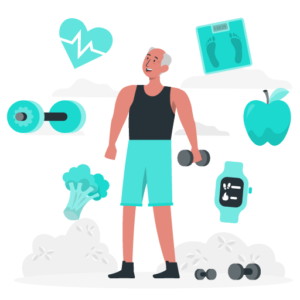Stroke recovery is a process that involves making changes in the physical, social and emotional aspects of one’s life. It is important to create habits to meet this goal and learn how to live well after a stroke.
After a stroke, good habits, such as organizing the daily routines and practicing post-stroke rehabilitation, will help to get back to an independent life and to care for the things that really matter. Active rehabilitation programs and physical exercises can promote motor and cognitive learning and stimulate brain reorganization to improve lost function and skills after a stroke
Daily Habits and Life Style Changes
Suggested reading
Life after stroke. American Stroke Association website.
Download the Guideline for Patients and Caregivers:
in English: https://www.stroke.org/-/media/stroke-files/life-after-stroke/life-after-stroke-guide_7819.pdf?la=en
In Spanish: https://www.stroke.org/-/media/stroke-files/spanish-resources/life-after-stroke-guide_spanisha.pdf?la=en
Long-term management of stroke. EBSCO DynaMed Plus website.
Guidelines for Adult Stroke Rehabilitation and Recovery: A Guideline for Healthcare Professionals From the American Heart Association/American Stroke Association.
Winstein CJ, Stein J, Arena R, et al, American Heart Association Stroke Council, Council on Cardiovascular and Stroke Nursing, Council on Clinical Cardiology, and Council on Quality of Care and Outcomes Research..
Stroke. 2016 Jun;47(6):e98-e169 full-text, corrections can be found in Stroke 2017 Feb;48(2):e78 and Stroke 2017 Dec;48(12):e369.
Guidelines for the Prevention of Stroke in Patients With Stroke or Transient Ischemic Attack: A Guideline for Healthcare Professionals From the American Heart Association/American Stroke Association.
Stroke. Furie KL, Kasner SE, Adams RJ, et al. 2011; 42(1):227-276. Available at: http://stroke.ahajournals.org/content/early/2010/10/21/STR.0b013e3181f7d043.full.pdf.
Guidelines for the prevention of stroke in women: a statement for healthcare professionals from the American Heart Association/American Stroke Association. Stroke. 2014;45(5):1545-1588. Bushnell C, McCullough LD, Awad IA, et al.
Available at: http://stroke.ahajournals.org/content/early/2014/02/06/01.str.0000442009.06663.48.full.pdf.
Primary prevention of stroke. EBSCO DynaMed Plus website.
National Heart, Lung, and Blood Institute. Description of the DASH eating plan. https://www.nhlbi.nih.gov/health/health-topics/topics/dash.
Home modifications for stroke survivors. American Stroke Association website.
Stroke. National Heart, Lung, and Blood Institute website.
Available at: http://www.nhlbi.nih.gov/health/health-topics/topics/stroke.





